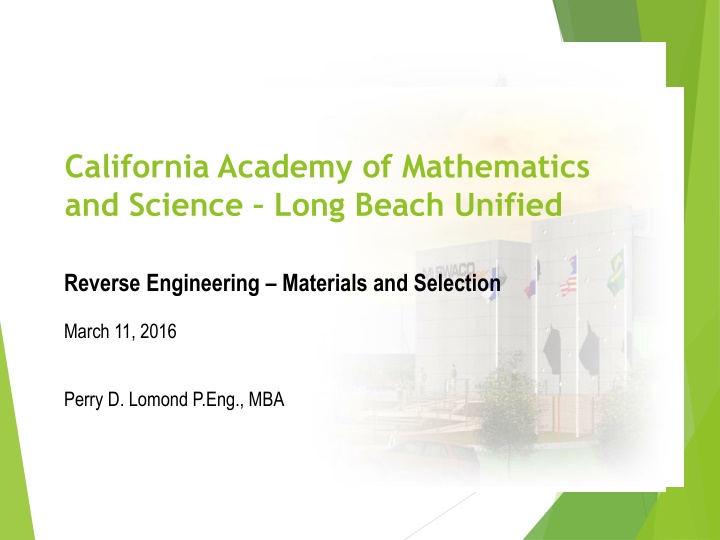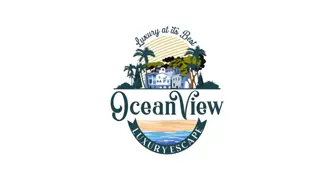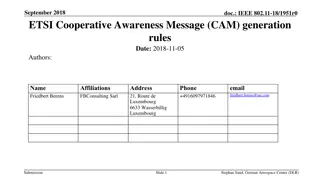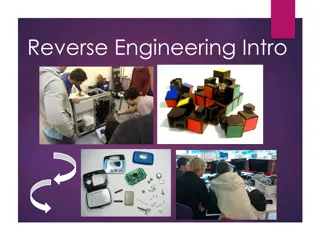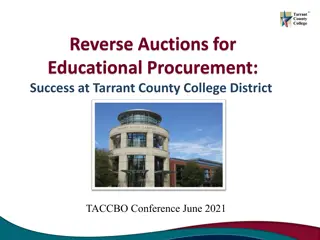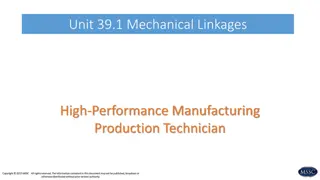Reverse Engineering Materials and Selection at CAMS Long Beach Unified
Explore the process of reverse engineering materials and selection in engineering by Perry D. Lomond P.Eng., MBA on March 11, 2016 at the California Academy of Mathematics and Science in Long Beach Unified. Gain insights into techniques and considerations involved in this essential aspect of design and innovation.
Uploaded on Mar 12, 2025 | 3 Views
Download Presentation

Please find below an Image/Link to download the presentation.
The content on the website is provided AS IS for your information and personal use only. It may not be sold, licensed, or shared on other websites without obtaining consent from the author.If you encounter any issues during the download, it is possible that the publisher has removed the file from their server.
You are allowed to download the files provided on this website for personal or commercial use, subject to the condition that they are used lawfully. All files are the property of their respective owners.
The content on the website is provided AS IS for your information and personal use only. It may not be sold, licensed, or shared on other websites without obtaining consent from the author.
E N D
Presentation Transcript
California Academy of Mathematics and Science Long Beach Unified Reverse Engineering Materials and Selection March 11, 2016 Perry D. Lomond P.Eng., MBA
Production Waste Management Waste Water & Mud Treatment Desorption Technologies Cuttings treatment Technologies Production Chemicals Waste Injection Clean Cut Collection and Transportation Mud Mix & Solids Control Produced Water Treatment Automatic Tank Cleaning Waste Water Treatment Pressure Control Drilling Fluids Waste Injection & Sub Surface Assurance SPS Wellbore Clean-up Reservoir Fluids Completion Fluids
What is Reverse Engineering Merriam Webster defines this as: to study the parts of (something) to see how it was made and how it works so that you can make something that is like it Dictionary .com to study or analyze (a device, as a microchip for computers) in order to learn details of design, construction, and operation, perhaps to produce a copy or an improved version.
Key Questions 1 What are the implications of using reverse engineering? How do we benefit from reverse engineering? Pros Cons Faster to market Potential Patent Infringement Reduced development costs (months vs years) Possible unknown problems Lack of developed supply chain Faster Return on Investment Commodity pricing on products Potentially a better product No intellectual property More products to produce parts or whole assembly Seen as a Me too company SAFETY is a necessary part of Engineering
Key Questions 2 Did engineers use reverse engineering on alien space craft in order to advance human knowledge? What do you think and why? I am not aware of an alien space craft ever being discovered or used to influence the development of science on Earth. With the number of stars and potential number of planets, I do suspect an alien culture does exist. What is the form and technology of this culture is currently unknown.
Material Selection Select material based on: Loading Temperature Chemical Compatibility Visual appeal Resistance to corrosion, wear, abrasion, etc.
Testing Charpy V Notch Glass Transition, when normally ductile materials become brittle. Hardness correlates with Tensile strength, but also shows surface resistance to damage and biologics. X-Ray a test that is done to determine the presence of voids, occlusions, debris, cracks, potential embrittlement issues, etc. Tensile- Ultimate Tensile Strength (UTS), Yield, Stress/Strain Curve, 0.2% offset yield Aging used to determine chemical compatibility of a polymer with a fluid Ladle Chemistry determines grade and specification, quality control, potential brittleness, Carbon content (equivalency)
Product Development Lifecycle Sustainin g Product Support Release for Sale Product Assurance (Timing, Cost, Commercialization Business Inputs Development Ideas Customer Satisfaction Ideas Ideas Feasibility Initial Proposal Product realization Efficiency) Project Screening Vetted by Key Business Managers Supported by our Customers New Product Development Process Exploratory Phase Sustaining
Education Levels High School Good grades required, do sciences and maths where possible, ie. Physics, Chemistry, Calculus, etc. Post Secondary University Bachelor s Degree - Undergrad The most important degree, typically takes 4 to 6 years to complete Masters Degree - Graduate Specializes one s education into a specific area Add 2 years to the Bachelor PhD Doctorate - Graduate Add 3 to 5 years beyond the Bachelor Requirement in Academia, very useful in the research departments of corporations.
Alternate Routes B Eng. Tech 4 Year Program at University A pared down engineering degree that addresses a position between Engineer and Technologist Focused on Technology and fabrication Technologist 3 year program at CC More math orientation addresses a master tradesman, specialist, etc. Technician 1 2 Year Program at CC Mechanic, Refrigeration Tech., Lab Tech., etc
Questions? What do you think about Reverse Engineering?
